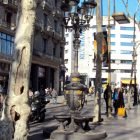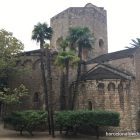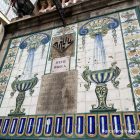From the narrow streets and alleyways of the Gothic Quarter to the wide boulevards of l’Eixample district, wherever you go in Barcelona, you’ll see fountains of all shapes and sizes.

The earliest fountains were built during the Middle Ages to provide water for Barcelona’s inhabitants and livestock. Simple and functional, early fountains were sparsely decorated and usually consisted of just a row of water spouts and a stone trough for horses to drink from.
The first monumental fountains appeared during the nineteenth century, typically stone statues standing atop a plinth with brass taps set into the base.
By the end of the century, Barcelona was booming and in 1888 hosted the first of two World’s Fairs similar to those that had been staged in London and Paris. Many of Barcelona’s most emblematic monuments, buildings and parks were built especially for the fairs including several large and purely decorative fountains.
The city’s sanitary infrastructure developed during the twentieth century, and water was piped directly into people’s homes.
Unlike most other cities, Barcelona city council decided to maintain public water fountains which can be seen on street corners throughout the city. They have even created a handy app to help citizens find their nearest fountain.

Santa Ana’s Fountain: La Font de Santa Ana
Santa Ana’s fountain dates back to 1356 and is the oldest fountain in Barcelona.
During the medieval period, Barcelona was surrounded by a three-metre-high defensive wall with eight gateways controlling access to the city. Santa Ana’s fountain was built in a small plaza next to Portal dels Orbs (later renamed Portal de l’Angel), the main gateway on the road leading northwest to Gràcia.
Initially, it was little more than a trough used to water horses and mules at the entrance to the city. In 1375, a fountain was added to supply drinking water for the city’s human population.
In 1819, the fountain was enlarged and replaced by the hexagonal stone structure, which still stands today. The ceramic tiles and other decorative features were added in 1918.
Location
Santa Ana’s fountain is located next to Carrer dels Arcs numebr 7 in Barcelona’s Gothic Quarter.
How to get there
The nearest metro stations are Jaume I (L4) and Catalunya (L1 & L3)
Other attractions nearby
- Barcelona Cathedral
- Bishop’s Bridge (El Pont del Bisbe)
- The kiss wall
- Plaça de Sant Felip Neri
- Barcelona Jewish Quarter (El Call)
Map
Carrer dels Arcs, 7, Barcelona




